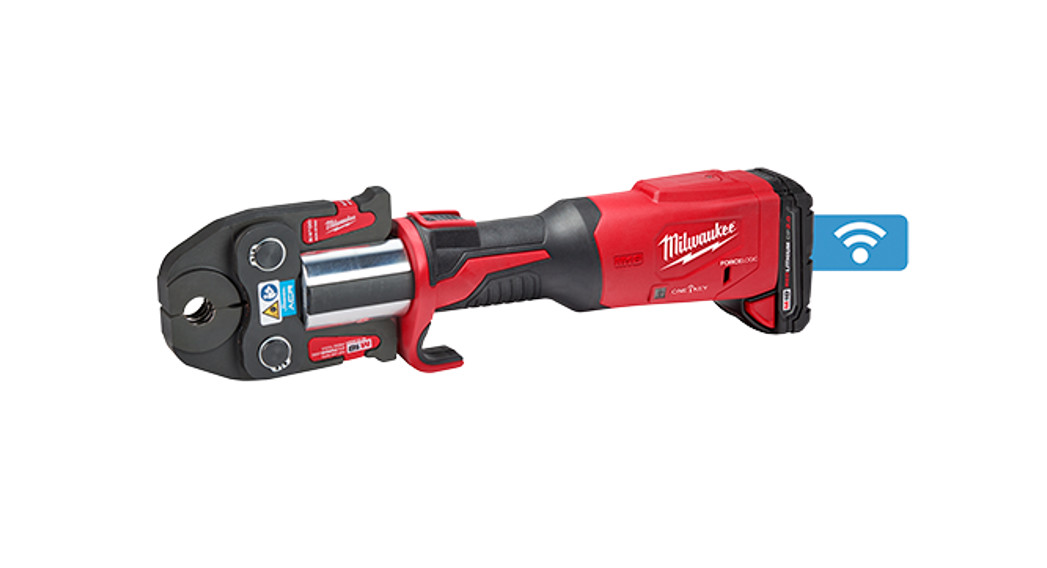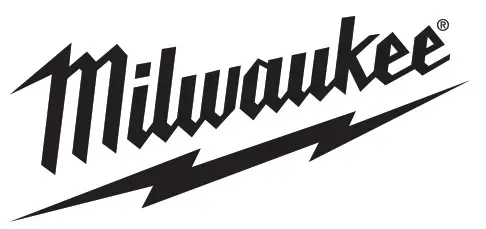
OPERATOR’S MANUAL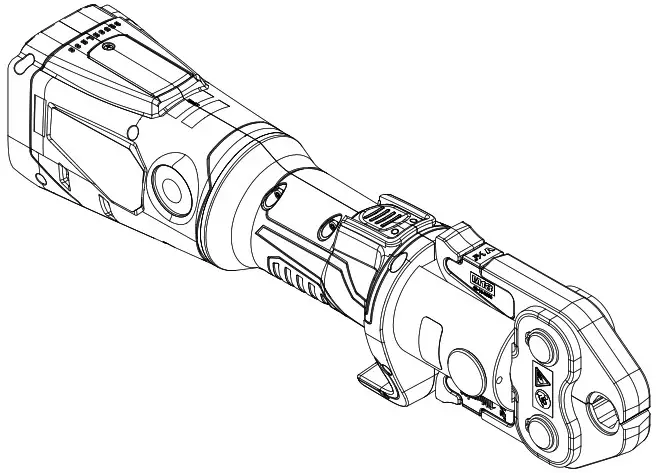
Cat. No. / No de cat.2922-20M18™ FORCE LOGIC™ PRESS TOOL WITH ONE-KEY™ OUTIL DE PRESSAGE M18™ FORCE LOGIC™ WITH ONE-KEY™ HERRAMIENTA DE PRENSA M18™ FORCE LOGIC™ WITH ONE-KEY™![]() WARNING To reduce the risk of injury, user must read and understand operator’s manual.
WARNING To reduce the risk of injury, user must read and understand operator’s manual.![]()
![]()
![]()
GENERAL POWER TOOL SAFETY WARNINGS
![]()
![]()
![]()
WORK AREA SAFETY
- Keep work area clean and well lit. Cluttered or dark areas invite accidents.
- Do not operate power tools in explosive atmospheres, such as in the presence of flammable liquids, gases or dust. Power tools create sparks which may ignite the dust or fumes.
- Keep children and bystanders away while operating a power tool. Distractions can cause you to lose control.
ELECTRICAL SAFETY
- Power tool plugs must match the outlet. Never modify the plug in any way. Do not use any adapter plugs with earthed (grounded) power tools. Unmodified plugs and matching outlets will reduce risk of electric shock.
- Avoid body contact with earthed or grounded surfaces, such as pipes, radiators, ranges and refrigerators. There is an increased risk of electric shock if your body is earthed or grounded.
- Do not expose power tools to rain or wet conditions. Water entering a power tool will increase the risk of electric shock.
- Do not abuse the cord. Never use the cord for carrying, pulling or unplugging the power tool. Keep cord away from heat, oil, sharp edges or moving parts. Damaged or entangled cords increase the risk of electric shock.
- When operating a power tool outdoors, use an extension cord suitable for outdoor use. Use of a cord suitable for outdoor use reduces the risk of electric shock.
- If operating a power tool in a damp location is unavoidable, use a ground fault circuit interrupter (GFCI) protected supply. Use of an GFCI reduces the risk of electric shock.
PERSONAL SAFETY
- Stay alert, watch what you are doing and use common sense when operating a power tool. Do not use a power tool while you are tired or under the influence of drugs, alcohol or medication. A moment of inattention while operating power tools may result in serious personal injury.
- Use personal protective equipment. Always wear eye protection. Protective equipment such as a dust mask, non-skid safety shoes, hard hat or hearing protection used for appropriate conditions will reduce personal injuries.
- Prevent unintentional starting. Ensure the switch is in the off-position before connecting to power source and/or battery pack, picking up or carrying the tool. Carrying power tools with your finger on the switch or energizing power tools that have the switch on invites accidents.
- Remove any adjusting key or wrench before turning the power tool on. A wrench or a key left attached to a rotating part of the power tool may result in personal injury.
- Do not overreach. Keep proper footing and balance at all times. This enables better control of the power tool in unexpected situations.
- Dress properly. Do not wear loose clothing or jewelry. Keep your hair and clothing away from moving parts. Loose clothes, jewelry or long hair can be caught in moving parts.
- If devices are provided for the connection of dust extraction and collection facilities, ensure these are connected and properly used. Use of dust collection can reduce dust-related hazards.
- Do not let familiarity gained from frequent use of tools allow you to become complacent and ignore tool safety principles. A careless action can cause severe injury within a fraction of a second.
POWER TOOL USE AND CARE
- Do not force the power tool. Use the correct power tool for your application. The correct power tool will do the job better and safer at the rate for which it was designed.
- Do not use the power tool if the switch does not turn it on and off. Any power tool that cannot be controlled with the switch is dangerous and must be repaired.
- Disconnect the plug from the power source and/ or remove the battery pack, if detachable, from the power tool before making any adjustments, changing accessories, or storing power tools. Such preventive safety measures reduce the risk of starting the power tool accidentally.
- Store idle power tools out of the reach of children and do not allow persons unfamiliar with the power tool or these instructions to operate the power tool. Power tools are dangerous in the hands of untrained users.
- Maintain power tools and accessories. Check for misalignment or binding of moving parts, breakage of parts and any other condition that may affect the power tool’s operation. If damaged, have the power tool repaired before use. Many accidents are caused by poorly maintained power tools.
- Keep cutting tools sharp and clean. Properly maintained cutting tools with sharp cutting edges are less likely to bind and are easier to control.
- Use the power tool, accessories and tool bits etc. in accordance with these instructions, taking into account the working conditions and the work to be performed. Use of the power tool for operations different from those intended could result in a hazardous situation.
- Keep handles and grasping surfaces dry, clean and free from oil and grease. Slippery handles and grasping surfaces do not allow for safe handling and control of the tool in unexpected situations.
BATTERY TOOL USE AND CARE
- Recharge only with the charger specified by the manufacturer. A charger that is suitable for one type of battery pack may create a risk of fire when used with another battery pack.
- Use power tools only with specifically designated battery packs. Use of any other battery packs may create a risk of injury and fire.
- When battery pack is not in use, keep it away from other metal objects, like paper clips, coins, keys, nails, screws or other small metal objects, that can make a connection from one terminal to another. Shorting the battery terminals together may cause burns or a fire.
- Under abusive conditions, liquid may be ejected from the battery; avoid contact. If contact accidentally occurs, flush with water. If liquid contacts eyes, additionally seek medical help. Liquid ejected from the battery may cause irritation or burns.
- Do not use a battery pack or tool that is damaged or modified. Damaged or modified batteries may exhibit unpredictable behavior resulting in fire, explosion or risk of injury.
- Do not expose a battery pack or tool to fire or excessive temperature. Exposure to fire or temperature above 265°F (130°C) may cause explosion.
- Follow all charging instructions and do not charge the battery pack or tool outside the temperature range specified in the instructions. Charging improperly or at temperatures outside the specified range may damage the battery and increase the risk of fire.
SERVICE
- Have your power tool serviced by a qualified repair person using only identical replacement parts. This will ensure that the safety of the power tool is maintained.
- Never service damaged battery packs. Service of battery packs should only be performed by the manufacturer or authorized service providers.
SPECIFIC SAFETY RULES FOR PRESS TOOL
- Use tool only as directed. Only trained personnel should operate tools.
- Do not use the tool without press jaw installed. Fingers could be crushed.
- Keep hands away from pressing the jaw while the tool is in use. Fingers could be crushed.
- Chemical Burn Hazard. Keep coin cell batteries away from children.
- To reduce the risk of injury, wear safety goggles or glasses with side shields. Inspect and discard workpieces with cracks or wear before use. Materials may crack or shatter.
- Use tool only with MILWAUKEE or MILWAUKEE approved press jaws, press fittings, and pipes for which they are designed. Other uses may cause injury or damage to the tool, accessories, and pipes. Leaking may result.
- Only use press jaw with a compression range rated for this tool.
- Always use common sense and be cautious when using tools. It is not possible to anticipate every situation that could result in a dangerous outcome. Do not use this tool if you do not understand these operating instructions or you feel the work is beyond our capability; contact Milwaukee Tool or a trained professional for additional information or training.
- Maintain labels and nameplates. These carry important information. If unreadable or missing, contact a MILWAUKEE service facility for a free replacement.
![]()
![]()
- lead from lead-based paint
- crystalline silica from bricks and cement and other masonry products, and
- arsenic and chromium from chemically treated lumber. Your risk from these exposures varies, depending on how often you do this type of work. To reduce your exposure to these chemicals: work in a well-ventilated area, and work with approved safety equipment, such as those dust masks that are specially designed to filter out microscopic particles.
| Volts | |
| Direct Current | |
| Watts | |
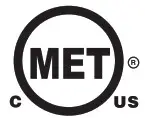  |
MET LaboratoriesUnited States and Canada |
| Read operator’s manual | |
  |
Risk of Injury |
SPECIFICATIONS
SPECIFICATIONSCat. No. …………………………………………….. 2922-20Volts…………………………………………………….. 18 DCWatts ………………………………………………………..450Nominal Force …………………………………….7200 lbsCompression RangeCopper and Stainless ………… < Ø 4″ (100 mm)PEX ………………………………… < Ø 2″ (50 mm)Black Iron Pipe …………………. < Ø 2″ (50 mm)Battery Type ………………………………………….M18™Charger Type…………………………………………M18™Module/FCC ID ………………………..BGM11S/Q0Q11Recommended AmbientOperating Temperature ………………..14°F to 122°F
FUNCTIONAL DESCRIPTION
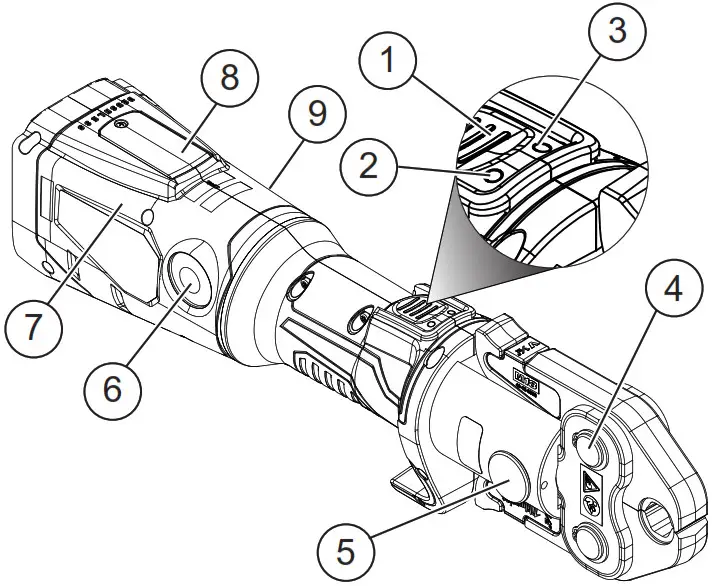

| 1. Start button | 4. Press jaw | 7. Handle |
| 2. Green LED | 5. Retaining pin | 8. Coin battery door |
| 3. Red LED | 6. Release button | 9. ONE-KEY™ Indicator (Not shown) |
ASSEMBLY
![]()
![]()
![]()
![]()
![]()
![]()
![]()
![]()
![]()
![]()
![]()
![]()
![]()
![]()
![]()
- Pull out the retaining pin (1).
- Insert the press jaw (2).
- Push in the retaining pin (3).

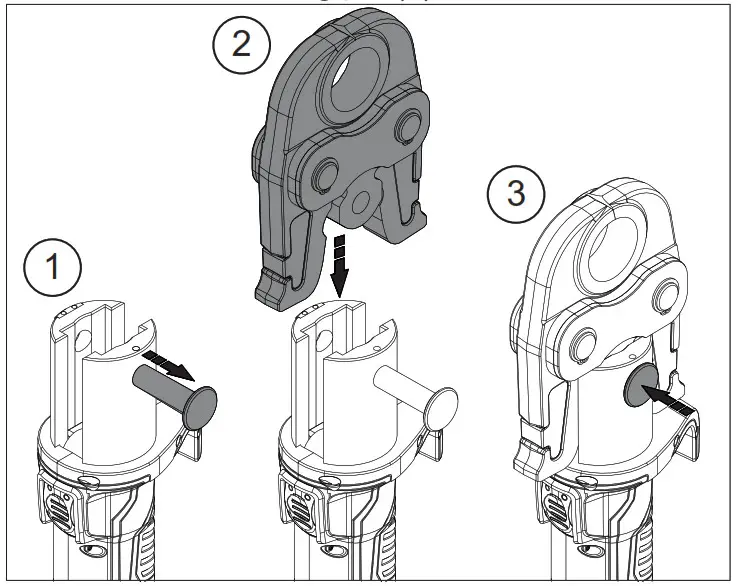
![]()
![]()
![]()
![]()
![]()
| ONE-KEY™ Indicator | |
| Solid Blue | Wireless mode is active and ready to be configured via the ONE-KEY™ app. |
| Blinking Blue | Tool is actively communicating with the ONE-KEY™ app. |
| Blinking Red | Tool is in security lockout and can be unlocked by the owner via the ONE-KEY™ app. |
OPERATION
![]()
![]()
![]()
![]()
![]()
- Before beginning a press, inspect the jaw assembly for cracks or other damage. Do not use a damaged jaw assembly. Return damaged jaw assembly to a MILWAUKEE service facility.
- The tool will turn off automatically after 40 seconds of no use.
- Inspect and discard workpieces with cracks or wear before use. Materials may crack or shatter.


- Turn the tool ON by quickly pressing and releasing the start button.
- Open the jaws and place around the fitting.
- Hold tool securely. Press and hold thestart button. Thegreen LED will go out.
- The automatic press cycle begins. Release the start button andcontinue to holdthe tool securely.
- When the presscycle is completethe tool will switch off and the green LED will light.
- To cancel the automatic press cycle, press and hold the release button. Hold tool securely until jaws open and the tool turns off.
- If the tool is in use for 30 minutes continuously (e.g., on a manufacturing fixture), allow the tool to cool down for at least 15 minutes before continuing. Under normal use (e.g., plumbing/mechanical) press freely and pay attention to the LED indicators (see “Troubleshooting”).
- If the red LED lights, press the start button. If the tool does not run, return the tool to a MILWAUKEE service facility for repairs.
- If the red and green LEDs blink alternately, the tool must be serviced by a MILWAUKEE service facility.
Troubleshooting
| LED | Cause |
Solution |
| Green LED blinking | The battery is not sufficiently charged to complete a pressing operation. | Charge the battery. |
| The retaining pin is not correctly shut or has come loose. | Insert the retaining pin, or check the retaining pin and cylinder.
NOTE: The pressing operation may not have been completed. Check and repeat if necessary. |
|
| Red LED blinking | Device not within operating temperature range. | Bring device into operating temperature range 14°F to 122°F (-10°C to 50°C) |
| Red LED on | Device fault | Retry operation. If Red LED remains lit, return the tool, charger and battery pack, to a MILWAUKEE service facility for repairs. |
| Green and Red LED blinking alternately | Service needed | The tool has reached its service interval (50,000 cycles). Return the tool, charger and battery pack, to a MILWAUKEE service facility for service. |
MAINTENANCE
WARNINGTo reduce the risk of injury, always unplug the charger and remove the battery pack from the charger or tool before performing any maintenance. Never disassemble the tool, battery pack or charger. Contact a MILWAUKEE service facility for ALL repairs.
Maintaining Tool
Keep your tool, battery pack and charger in good repair by adopting a regular maintenance program. Inspect your tool for issues such as undue noise, misalignment or binding of moving parts, breakage of parts, or any other condition that may affect the tool operation. Return the tool, battery pack, and charger to a MILWAUKEE service facility for repair. After six months to one year, depending on use, return the tool, battery pack and charger to a MILWAUKEE service facility for inspection. If the tool does not start or operate at full power with a fully charged battery pack, clean the contacts on the battery pack. If the tool still does not work properly, return the tool, charger and battery pack, to a MILWAUKEE service facility for repairs.
ONE-KEY™
![]()
![]()
![]()
![]()
![]()


Internal Battery
An internal battery is used to facilitate full ONE-KEY™ functionality. If the Mode Indicator LED turns off and the tool cannot adjust speed, or if the Bluetooth communication stops working, remove and reinsert the coin cell battery to reset. Replace the battery if the problem continues. To replace the battery:
- Remove the battery pack.
- Remove the screw(s) and open the battery door.
- Remove the old battery, keep it away from children, and dispose of it properly.
- Insert the new battery (3V CR2032), with the positive side facing up.
- Close the battery door and tighten the screw(s) securely.
![]()
![]()
![]()
![]()
![]()
RepairsFor repairs, return the tool, battery pack and charger to the nearest authorized service center.
ACCESSORIES
![]()
![]()
![]()
![]()
![]()
WIRELESS COMMUNICATION
For products provided with wireless communication features, including ONE-KEY™: Pursuant to part 15.21 of the FCC Rules, do not modify this product. Modification could void your authority to operate the product. This device complies with part 15 of the FCC Rules and ISED-Canada’s license exempt RSS standards. Operation is subject to the following two conditions: 1) This device may not cause harmful interference, and 2) This device must accept any interference received, including interference that may cause undesired operation.
SERVICE – UNITED STATES
1-800-SAWDUST (1.800.729.3878)Monday-Friday, 7:00 AM – 6:30 PM CST orvisit www.milwaukeetool.comContact Corporate After Sales Service Technical Support with technical, service/repair, or warranty questions.Email: [email protected]Become a Heavy Duty Club Member at www.milwaukeetool.comto receive important notifications regarding your tool purchases.
References
[xyz-ips snippet=”download-snippet”]

